An Italian Wife Read online
Page 22
Josephine thought about this. Her birthday. She was born on September 24, 1874, in Conca Campania, Italy, a village high up in the mountains. The villagers liked to say they lived close to God. To Josephine, that seemed to be true, even now. The village was a maze of white stone houses, cobblestone streets, fields and hills. In the center sat the church, and perched on its steeple, watching over the village and its people, was the Virgin Mary. She wore long blue robes. Her hair was a tumble of black ringlets. In her arms she held her son, the baby Jesus. And all of this was outlined in twenty-four-karat gold. That gold shimmered in the bright sunlight and glowed at night. Her halo, a large round disc above her head, was also gold. From afar, Josephine could look up and see that golden image and feel safe under its watchful eyes.
In the village, she ran barefoot. She herded the sheep for the nuns and helped the women bake the Communion wafers. She ate figs fresh from trees, and juicy grapes right off the vines. One of the things she never got used to in America was the way the fruit tasted. It didn’t have the sunshine in it, the way it did in the Old Country. She never got used to wearing shoes, either. Wiggling her toes now, she realized she only had on socks. Maybe she could get this girl to take them off and then she could run barefoot through the grass.
The nurse’s face was very close to Josephine’s, so close that Josephine smelled the bad American coffee on her breath.
“You’re one hundred years old today, Mrs. Rimaldi. And your entire family is coming to give you a party.”
Josephine laughed. What foolishness was this girl giving her today?
“Do you want to wear your butterfly barrette?” the girl was saying.
Josephine struggled to tell her things: about the magic dust on butterflies’ wings, and how she wanted to take off her socks and run in the grass, and that she had hidden the barrette so that she never had to wear it again.
“I can’t find it,” the girl was muttering.
Josephine wondered if anyone had ever told Carmine the truth about Anna Zito; if Valentina had ever wondered about her; if Tommy Petrocelli had died. She wanted to run barefoot in the grass. Was it safe to go outside? Josephine tried to ask. Or were people still dying of the Spanish Influenza? All the words strangled in her throat.
“You all right?” the nurse said, hurrying to her side. She clamped a blood-pressure cuff on Josephine, placed her own fingers on Josephine’s wrist to feel the weak flutter there, like butterfly wings.
Josephine’s heart slowed and she grew calmer. Her eyes met the girl’s and she managed to ask, “Tommy Petrocelli? He come see?” She shook her head and tried again. “He see me today?”
Frowning at the blood-pressure machine, the nurse said absently, “Not today, Mrs. Rimaldi.”
“Ah,” Josephine said, unable to hide her disappointment.
“But everyone else is here,” the nurse said, bringing her worried face close to Josephine’s.
Something strange was going on in Josephine’s chest. She’d had these feelings before. Pushing out her first baby. Falling in love with the ice man. Handing Valentina to the nun. The feeling was something like love and something like grief. But how to explain this to the silly nurse who was staring at her with such concentration.
“I’m going to take you to the sunroom, Mrs. Rimaldi,” she said. “That’s where everybody is waiting for you.” She was talking loud, like she always did, but Josephine was having trouble hearing her. “Remember?” the girl said. “Today is your birthday.”
“September 24,” Josephine said.
“Yes!” the nurse said. “Good for you!”
She expertly spun the wheelchair toward the door.
Josephine’s heart did twists and turns. She thought of Valentina, so small and perfect and beautiful. She remembered the feel of cold, slippery ice in her hands on a summer day.
“Here we go, Mrs. Rimaldi,” the nurse said.
Josephine took a breath. The hallways tumbled past her, and she reached her hands out to try to keep her balance. She remembered a long-ago day when she tried to learn how to ride a bicycle, the off-kilter feeling as she struggled to stay upright.
“What’s that, Mrs. Rimaldi?” the nurse asked. “You want to take a ride on a bicycle?”
Josephine shook her head. The stupid girl, she thought. She had not been able to learn, her fear of falling too great. Basta, she’d said finally, getting off the thing and leaning it against the house. She had legs, didn’t she? Good, strong ones that could run across fields and climb hills.
“If there’s one Italian word you’ve taught me, Mrs. Rimaldi,” the nurse said, “it’s basta. Enough. Right?”
The wheelchair sailed over a bump and into a room that smelled sour, like the bologna her children always begged for, that her grandchildren ate in sandwiches made with American bread and ketchup.
Slowly, the room was bathed in light. The sun came through the windows, bright and warm. Josephine tilted her face upward.
“You all right?” the nurse was asking.
Josephine gasped. She could not catch her breath. In the distance, finally, Josephine saw him. Tommy Petrocelli, carrying a big block of ice that sparkled in the sunlight. She leaned forward, again reaching a hand out.
A bell was ringing, and footsteps hurried toward it.
The stupid nurse kept calling her name, but her voice was growing fainter.
Josephine blinked, trying to bring the images floating in front of her into focus. There was Tommy, smiling at her now. Was Valentina there with him? If she could see her daughter again, then she would die a happy woman.
That was when Josephine knew: she was dying.
So this is it, Josephine thought. When we die we do not think of our children who are waiting down the hall, or of the food we’ve cooked to nourish them. We do not think of all the breads we’ve baked, or the tomatoes we’ve grown, or the hours we’ve spent at their sickbeds. We do not think of the things we hoped for. We do not think of the things we loved.
No. It is the things we did not have, the love that broke our hearts, the child we lost, that come to us finally.
As the sun sparkled and Tommy neared, Josephine’s heart filled.
She smiled and thought one word.
Yes.
ACKNOWLEDGEMENTS
I AM THE LUCKIEST WRITER I know with my dream teams at W. W. Norton and Brandt and Hochman. Thanks go to them, as always: Jill Bialosky, Gail Hochman, Erin Lovett, Jody Klein, Marianne Merola, and Rebecca Schultz.
And I have a dream team at home as well, and send thanks to Mary Hector for her enormous help; my husband, Lorne Adrain, and children, Sam, Annabelle, and Ariane, who inspire and support my writing life.
Parts of An Italian Wife were written thanks to fellowships at Yaddo and grants from Rhode Island School of Design. And gratitude goes to the editors who published sections of the book.
I would also like to thank Rebecca Doire, Coral Bourgeois, and Catherine Sebastian.
I grew up in a large, noisy, loving Italian-American family. Sadly, I’ve lost too many of them. But they live on in my heart and mind: Nonna, Mama Rose, Uncle Rum, Uncle Carmine, Nuneen, Auntie Etta; my uncles Joe, Brownie, and Chuckie; my aunties Rosie, Angie, Connie, Ann, and Dora; my cousins Cynthia and Peter; my own father Hood and brother Skip; my daughter Grace.
And for those still blessedly with me: Auntie Junie and Cousins Gina, Gloria-Jean, Tony, Becky, Chip, and all the others scattered around the country; Melissa (and Delila and Gus!); and mostly my mother, Gloria, aka Gogo, who makes me the luckiest daughter, ever.
ALSO BY ANN HOOD
The Obituary Writer
The Red Thread
The Knitting Circle
An Ornithologist’s Guide to Life
Somewhere Off the Coast of Maine
EDITED BY ANN HOOD
Knitting Yarns
AN ITALIAN WIFE
Ann Hood
READING GROUP GUIDE
DISCUSSION QUESTIONS
1. Fr
om her marriage to her emigration to America to raising her family, Josephine Rimaldi is not a person with a lot of choices in life. Would you consider her to be an unhappy person? Do you think she would consider herself to be unhappy? Has our definition of what happiness is, what choices a person deserves, and what makes for a meaningful life changed in the generations since Josephine’s youth?
2. Describe the character of Elisabetta. Is her childhood ambitiousness a particularly “American” trait? How else can we tell that Elisabetta was raised in a different culture from her mother’s?
3. Describe how the Rimaldi family’s relationship to the Catholic Church evolves from generation to generation.
4. Do you blame Carmine for the hurt and pain in his relationship to Anna Zito? To what extent is his own naïveté an excuse? Describe how his experiences in World War One affect his feelings toward women. What is he responding to when he calls his sisters and nieces “puttanas”? To what extent is he a product of his time?
5. Josephine loses a daughter. Martha loses a lover. Elisabetta loses her childhood ambition. Carmine loses his grip on reality. To what extent are Josephine and her children defined by loss? What do they find to live for in the wake of their losses?
6. Compare and contrast Josephine’s actual affair with Tommy Petrocelli to her daughter Connie’s imaginary affair, which she only wishes she had, with Dr. DiMarco. How are the two women’s circumstances different, and how are they similar? What are both women trying to escape?
7. We meet Josephine’s granddaughter Aida twice, once as a child in “Crooning with Dino” and then as a teenager in “The Boy on the Bus.” How can we see her growing up and coming of age from one chapter to the next? What does she learn?
8. We see the Rimaldi family affected by three wars over the course of the novel: World War One, World War Two, and the Vietnam War. Which characters are affected directly, and which indirectly? Can we use this family and these characters as a lens through which to understand how each of these wars changed the country overall?
9. What does it mean to be an “Italian wife”? Does the meaning of that moniker change over the course of the novel and from generation to generation?
10. The novel ends in a far more sexually permissive culture than the one in which it begins. Nonetheless, are there parallels to be drawn between Josephine’s introduction to sex and love with her husband Vincenzo after marriage in Italy and her granddaughter Penelope’s introduction to it at boarding school?
11. When and in what circumstances did your family come to America? Do you feel that you are in touch with your heritage? Did you—or did your parents or grandparents—make an effort to assimilate, like some of Josephine’s children did?
12. In the novel’s final scene, Josephine and her lost daughter are finally in the same place at the same time. Josephine never knows it, although the reader does. What is unique about the reader’s vantage point in An Italian Wife? How would the novel be different if our perspective was tied to a single character?
ADDITIONAL PRAISE FOR
An Italian Wife
“Glorious. The life of Josephine Rimaldi is the heart of this multi-
generational family saga with deep, fertile roots in southern Italy. Reading this novel was like taking a luscious train ride through the last century. It soars with the power of Josephine’s dreams as she builds a life and family in America. Full of surprise and wonder, the writing is at turns poetic and sensitive, then dynamic and wise. Ann Hood is a master craftsman. This resplendent novel is a grand crescendo in a pitch perfect career.”
—Adriana Trigiani, author of The Shoemaker’s Wife
“Hood reinvents the family saga into something so spellbindingly new, so authentically alive, that you might find yourself disoriented by your surroundings when you can bring yourself to look up from the page. From turn-of-the-century Italy to 1950s American suburbia to the psychedelic 1970s, Hood shows how love and history transform a family, fuel—and sometimes kill—their dreams, and connect them in ways they never might imagine. Sweeping, sensual, and downright astonishing.”
—Caroline Leavitt, New York Times best-selling author of Is This Tomorrow and Pictures of You
“I loved Ann Hood’s An Italian Wife in the same way I loved Elizabeth Strout’s Olive Kitteridge—and for the same reason. The interconnected stories that fan out from a central character—in this case, matriarch Josephine Rimaldi—illuminate important truths about the ways in which our families, our ancestry, and the era into which we’re born shape who we become. An Italian Wife is a multigenerational masterpiece.”
—Wally Lamb, author of We Are Water
“Readers will instantly develop a relationship with the characters, as it is impossible not to relate to them while reading about their loves, losses, secrets and lies, kindnesses and betrayals. Their stories interweave in unexpected and fascinating ways that illuminate the underlying similarities all humans share, including the innate desire to find a sense of belonging.”
—Italian Tribune
“With each chapter a coming-of-age tale of an individual family member, Hood offers a poignant view of the turbulent 20th century. She successfully displays the connected, ordinary lives of her characters, whom readers will come to love, appreciate, and enjoy. This intricately woven, engrossing narrative will delight Hood’s readers and attract fans of literary family sagas.”
—Library Journal
“You might call Ann Hood’s latest book a novel, and you might call it a short story collection. An Italian Wife falls somewhere between—a series of linked stories that, together, have all the gravity and sweep of the most engrossing novel.”
—Providence Journal
“An earthy, funny, sexy book, written by a master of her craft.”
—Sandusky Register
These stories have appeared in: “The Summer of Ice,” Five Chapters; “Coney
Island Dreams,” The Atlantic; “Dear Mussolini,” The Hartford Courant, “Best
New Fiction in the Northeast”; “Waiting for Churchill,” Five Points; “La
Vigilia,” Blue Christmas: Holiday Stories for the Rest of Us, edited by John
Dufresne (Books & Books, 2011); “Crooning With Dino,” Post Road.
Copyright © 2014 by Ann Hood
All rights reserved
First published as a Norton paperback 2015
For information about permission to reproduce selections from this book,
write to Permissions, W. W. Norton & Company, Inc.,
500 Fifth Avenue, New York, NY 10110
For information about special discounts for bulk purchases, please contact
W. W. Norton Special Sales at [email protected] or
800-233-4830
Book design by Barbara Bachman
Production manager: Louise Parasmo
The Library of Congress has cataloged the printed edition as follows:
Hood, Ann, 1956–
An Italian wife / Ann Hood. — First edition.
pages cm
ISBN 978-0-393-24166-2 (hardcover)
1. Italian Americans—Fiction. 2. Italian American families—Fiction. 3. Family life—Fiction. 4. Immigrants—Fiction. I. Title.
PS3558.O537I83 2014
813'.54—dc23
2014013801
ISBN 978-0-393-24576-9 (e-book)
ISBN 978-0-393-35123-1 (pbk.)
W. W. Norton & Company, Inc.
500 Fifth Avenue, New York, N.Y. 10110
www.wwnorton.com
W. W. Norton & Company Ltd.
Castle House, 75/76 Wells Street, London W1T 3QT
ter: grayscale(100%); -o-filter: grayscale(100%); -ms-filter: grayscale(100%); filter: grayscale(100%); " class="sharethis-inline-share-buttons">share

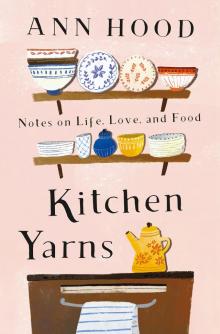 Kitchen Yarns
Kitchen Yarns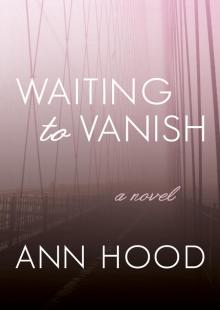 Waiting to Vanish
Waiting to Vanish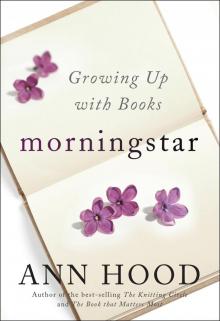 Morningstar
Morningstar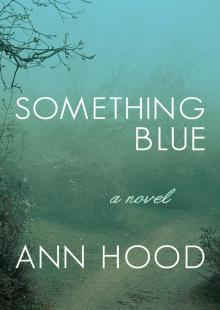 Something Blue
Something Blue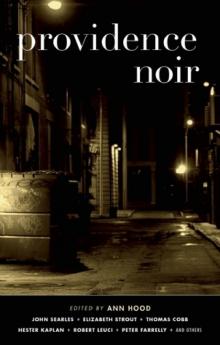 Providence Noir
Providence Noir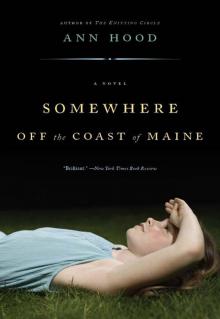 Somewhere Off the Coast of Maine
Somewhere Off the Coast of Maine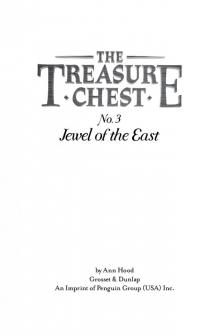 Jewel of the East
Jewel of the East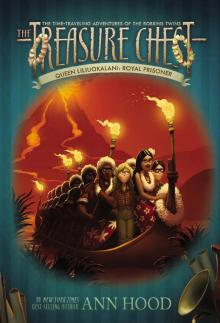 Queen Liliuokalani: Royal Prisoner
Queen Liliuokalani: Royal Prisoner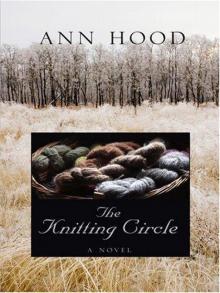 The Knitting Circle
The Knitting Circle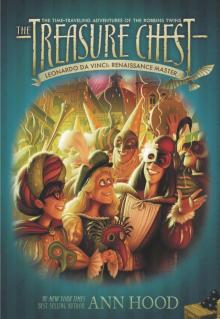 Leonardo da Vinci: Renaissance Master
Leonardo da Vinci: Renaissance Master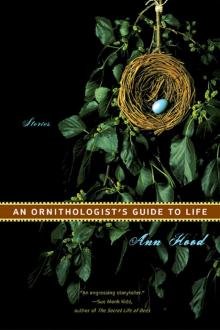 An Ornithologist's Guide to Life
An Ornithologist's Guide to Life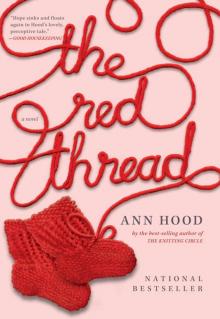 The Red Thread
The Red Thread She Loves You (Yeah, Yeah, Yeah)
She Loves You (Yeah, Yeah, Yeah)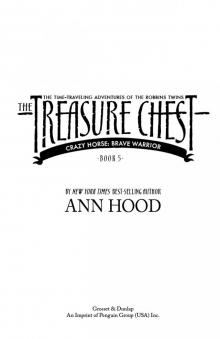 Brave Warrior
Brave Warrior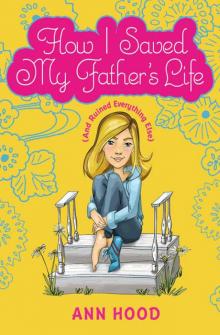 How I Saved My Father's Life (and Ruined Everything Else)
How I Saved My Father's Life (and Ruined Everything Else)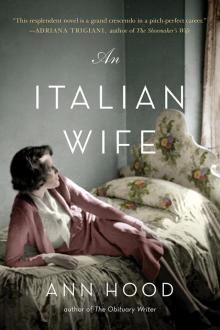 An Italian Wife
An Italian Wife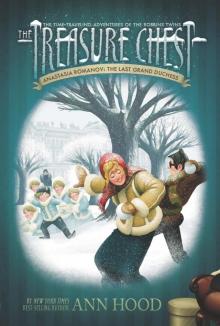 Anastasia Romanov: The Last Grand Duchess #10
Anastasia Romanov: The Last Grand Duchess #10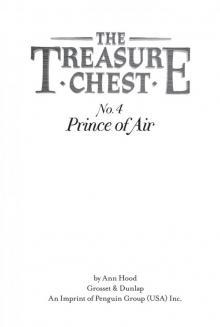 Prince of Air
Prince of Air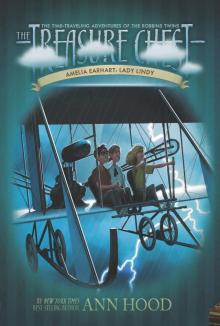 Amelia Earhart: Lady Lindy
Amelia Earhart: Lady Lindy Places to Stay the Night
Places to Stay the Night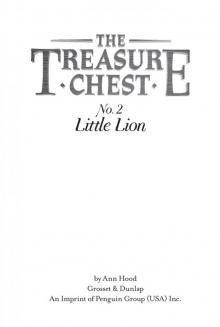 Little Lion
Little Lion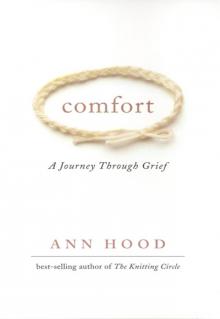 Comfort
Comfort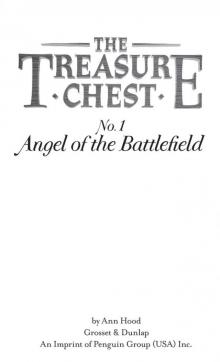 Angel of the Battlefield
Angel of the Battlefield